Italy
is largely a peninsula situated on the Mediterranean Sea, bordering France, Switzerland, Austria, and Slovenia in the north. The country, which is boot-shaped, is surrounded by the Ligurian Sea, the Sardinian Sea, and the Tyrrhenian Sea in the west, the Sicilian and Ionian Sea in the South, and Adriatic Sea in the East. Italian is the official language spoken by the majority of the population, but as you travel throughout the country, you will find there are several distinct Italian dialects corresponding to the region you are in. Italy has a very diverse landscape, but can be primarily described as mountainous including the Alps and the Apennines mountain ranges that run through the vast majority of it. Italy has two major islands as part of its country: Sardinia, which is an island off the west coast of Italy, and Sicily, which is at the southern tip of the boot. Italy has a population of around 60 million. The capital is Rome.- Full name: Italian Republic
- Population: 60.8 million (UN, 2011)
- Capital: Rome
- Area: 301,338 sq km (116,346 sq miles)
- Major language: Italian
- Major religion: Christianity
- Internet domain: .it
 |
| Vatican |
Arts, Culture and Music of Italy.
From antiquity to modern times, Italy has played a central role in world culture. Italians have contributed some of the world's most admired sculptures, architectural masterpieces, paintings, literature, and music (specially opera). Italians consider themselves the descendants of the ancient Romans and are very proud of their cultural heritage. |
| The Tempietto (San Pietro in Montorio), hich is an excellent example of Italian Renaissancearchitecture |
 |
| Michelangelo's ceiling in the Sistine Chapel. |
 |
| Dante, poised between the mountain of purgatory and the city of Florence, displays the famous incipit Nel mezzo del cammin di nostra vita in a detail of Domenico di Michelino's painting, Florence 1465. |
 |
| Verona Italy is well known as the setting for the Shakespearean tragedy of Romeo and Juliet |
The Last Supper by Leonardo da Vinci: equally to Mona Lisa, it is the most famous, most reproduced and most parodied portrait and religious painting of all time.
Music:The music of Italy ranges across a broad spectrum of opera and instrumental classical music and a body of popular music drawn from both native and imported sources.
Italian folk music is an important part of the country's musical heritage, and spans a diverse array of regional styles, instruments and dances.
 |
| Parmigiano Reggiano cheese, one of the over 200 Italian traditional specialitiesprotected under European law. |
Cuisine.
Italian cuisine is characterized by its extreme simplicity, with many dishes having only four to eight ingredients. Italian cooks rely chiefly on the quality of the ingredients rather than on elaborate preparation. Dishes and recipes are often the creation of grandmothers rather than of chefs, which makes many recipes ideally suited for home cooking. Cheese, ham and wine are a major part of the cuisine, with many variations and Denominazione di origine controllata (DOC) (regulated appellation) laws. Coffee, specifically espresso, has become important in Italian cuisine.
Cheese, ham and wine are a major part of the cuisine, with many variations and Denominazione di origine controllata (DOC) (regulated appellation) laws. Coffee, specifically espresso, has become important in Italian cuisine.
Climate.
Thanks to the great longitudinal extension of the peninsula and the mostly mountainous internal conformation, the climate of Italy is highly diverse. In most of the inland northern and central regions, the climate ranges from humid subtropical to humid continental andoceanic. In particular, the climate of the Po valley geographical region is mostly continental, with harsh winters and hot summers.
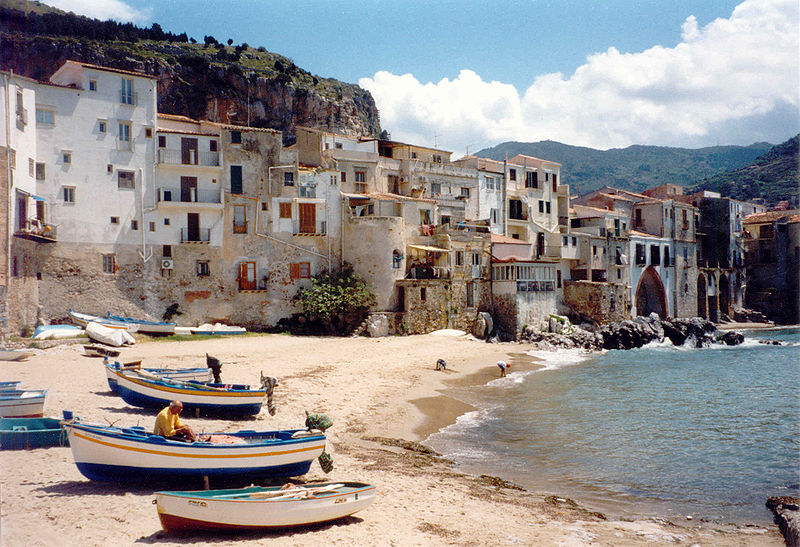 |
| Sicily is well known for its Mediterranean climate all year round. |
Conditions on peninsular coastal areas can be very different from the interior's higher ground and valleys, particularly during the winter months when the higher altitudes tend to be cold, wet, and often snowy. The coastal regions have mild winters and warm and generally dry summers, although lowland valleys can be quite hot in summer.
Government.
Italy has a parliamentary government based on a proportional voting system. The parliament is perfectly bicameral: the two houses, the Chamber of Deputies (that meets in Palazzo Montecitorio) and the Senate of the Republic (that meets in Palazzo Madama), have the same powers. The Prime Minister, officially President of the Council of Ministers (Presidente del Consiglio dei Ministri), is Italy's head of government. The Prime Minister and the cabinet are appointed by the President of the Republic, but must pass a vote of confidence in Parliament to become in office.
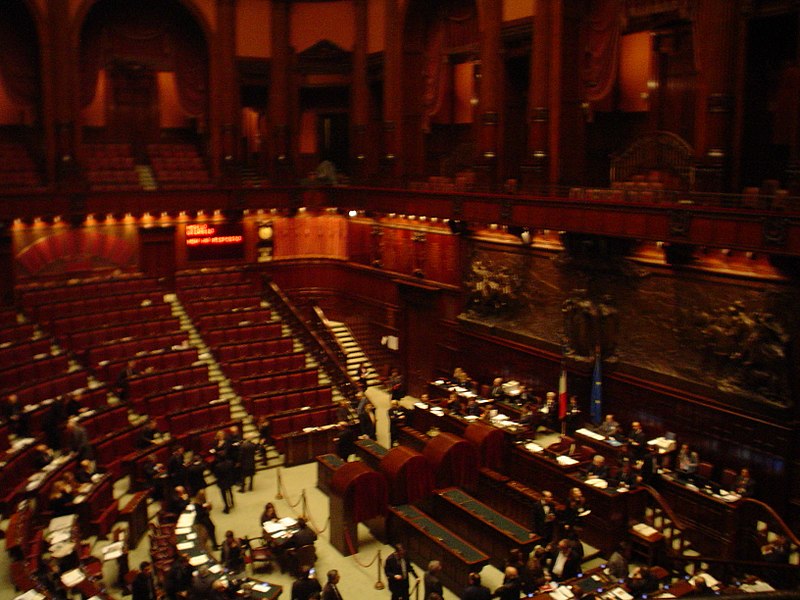 |
| Palazzo Montecitorio, seat of the Italian Chamber of Deputies. |
 While the office is similar to those in most other parliamentary systems, the Italian prime minister has less authority than some of his counterparts. The prime minister is not authorized to request the dissolution of Parliament or dismiss ministers (that are exclusive prerogatives of the President of the Republic) and must receive a vote of approval from the Council of Ministers—which holds effective executive power—to execute most political activities.
While the office is similar to those in most other parliamentary systems, the Italian prime minister has less authority than some of his counterparts. The prime minister is not authorized to request the dissolution of Parliament or dismiss ministers (that are exclusive prerogatives of the President of the Republic) and must receive a vote of approval from the Council of Ministers—which holds effective executive power—to execute most political activities.Tourist attraction.
Towers of San Gimignano

Nicknamed the medieval Manhatten, San Gimignano is a village in Tuscany famous for its 14 stone towers. At the height of San Gimignano’s wealth and power, more than 70 towers were built to defend the town against enemy attacks. After the plague devastated the city in 1348, San Gimignano’s power faded, which kept enemies away and preserved many of the city’s medieval towers.
Manarola (Cinque Terre)

Mestled in the Italian Riviera, Manarola is one of the oldest towns in Cinque Terre. The “Five Lands” comprises of five villages noted for their beauty. Part of Cinque Terre charm is the lack of visible modern development. Paths, trains and boats connect the villages, and cars cannot reach it from the outside. The towns sprout out of the mountainside to provide a breathtaking view of the Mediterranean sea.
Leaning Tower of Pisa
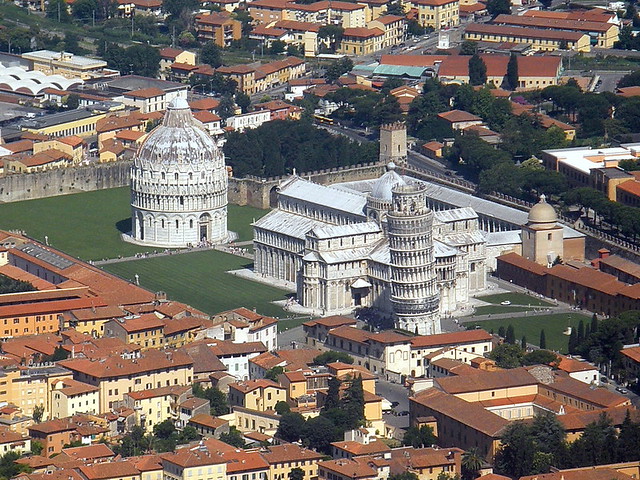
The world famous Pisa Tower was built over a period of about 177 years. Soon after the construction started in 1173 the tower began to sink due to a poorly laid foundation and was left alone for almost a century. When the construction resumed the engineers built higher floors with one side taller than the other to compensate for the tilt and the tower was finally finished in the 2nd half of the 14th century. Since 2001, the famous tower in Pisa is again open to those wishing to climb it’s 296 steps.
Lake Como (Italian Lake District)
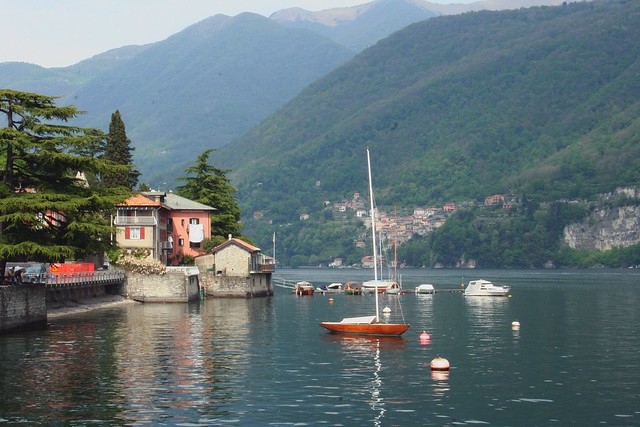
Lake Como is part of the Italian Lake District an area popular with visitors for well over 100 years for its combination of fresh air, water, mountains and good weather. The lake is shaped much like an inverted ‘Y’, with two branches starting at Como in the south-west and Lecco in the south-east, which join together half way up and the lake continues up to Colico in the north. The lake is famous for the attractive villas which have been built here since Roman times. Many have admirable gardens which benefit from the mild climate and are able to include tropical as well as temperate plants.
Positano (Amalfi Coast)
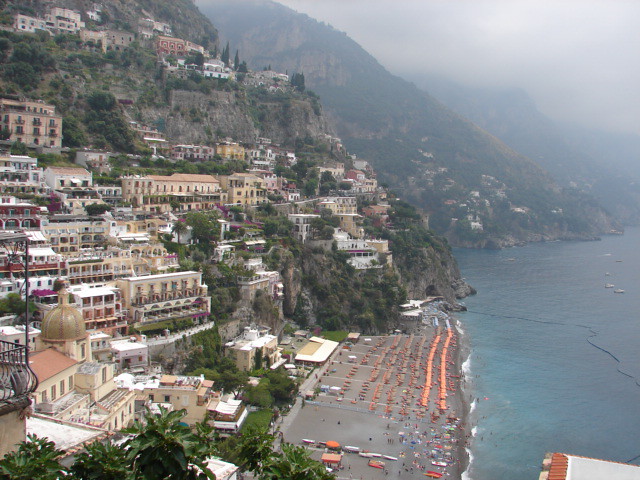
Positano is a small town located on the Amalfi Coast, a stretch of coastline renowned for its rugged terrain, scenic beauty, picturesque towns and diversity. The city seems to be scattered from top to bottom down a hillside leading to the coast. Though Positano grew and prospered in medieval times, by the mid 19th more than half of the population was gone. In the 20th century it went from being a poor fishing village to a very popular tourist attraction with the help of author John Steinbeck who wrote about its beauty.
Pompeii
 flickr/Mikael Miettinen
flickr/Mikael Miettinen
On August 24, 79 AD, the volcano Vesuvius erupted, covering the nearby town Pompeii with ash and soil, and subsequently preserving the city in its state from that fateful day. Everything from jars and tables to paintings and people were frozen in time. Its excavation has provided an extraordinarily detailed insight into the life of people living two thousand years ago. Today Pompeii is one of the most popular tourist attractions of Italy, with approximately 2,500,000 visitors every year.
Piazza del Campo
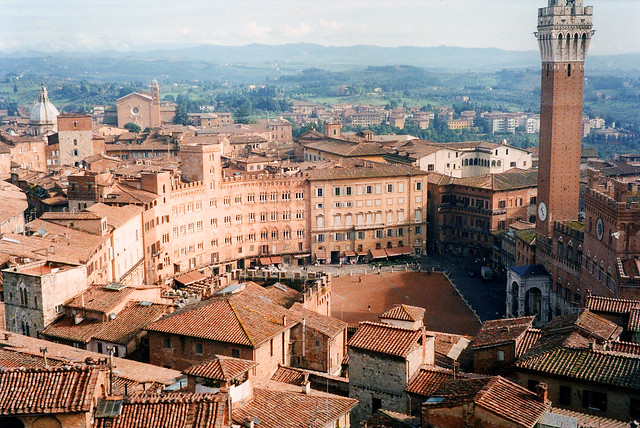 flickr/PhillipC
flickr/PhillipC
One of Europe’s greatest medieval squares, the Piazza del Campo is the principal public space of the historic center ofSiena, Tuscany. It is renowned worldwide for its beauty and architectural integrity. The Palazzo Pubblico and its famous tower, as well as various palazzi signorili belonging to the wealthiest of Siena families surround the shell-shaped piazza. The twice-per-year horse-race, Palio di Siena, involves circling the Piazza del Campo, on which a thick layer of dirt has been laid, three times and usually lasts no more than 90 seconds.
- Santa Maria del Fiore
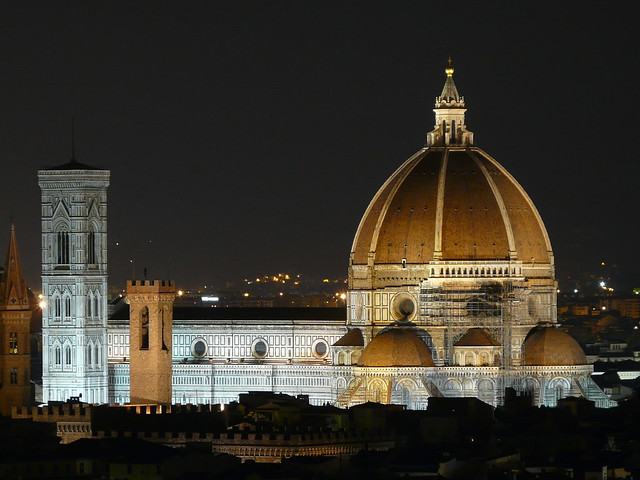 flickr/Sbaush
flickr/Sbaush
Begun in 1296 in the Gothic style and completed in 1436, The Basilica di Santa Maria del Fiore is Florence’s beautiful cathedral and symbol of the city. The exterior of the basilica is faced with polychrome marble panels in various shades of green and pink bordered by white. The basilica is one of Italy’s largest churches, and until the modern era, the dome was the largest in the world. It remains the largest brick dome ever constructed.
- Colosseum
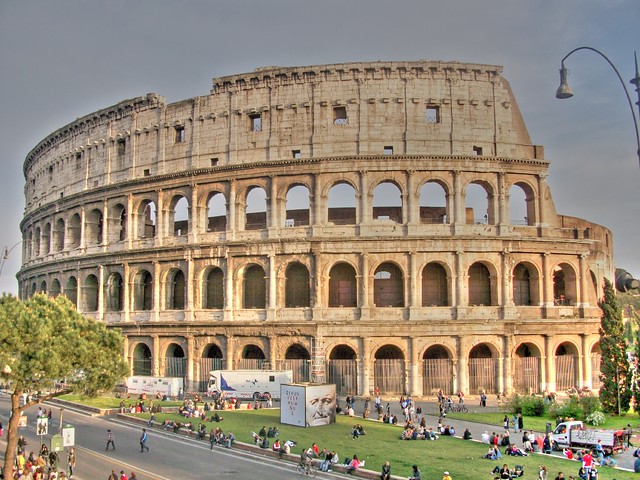 flickr/Brunswickian
flickr/Brunswickian
The Colosseum in Rome is the largest and most famous amphitheater in the Roman world. Its construction was started by emperor Vespasian of the Flavian dynasty in 72 AD and was finished by his son Titus in 80 AD. The Colosseum was capable of holding some 50,000 spectators who could enter the building through no less than 80 entrances. Spectators were protected from the rain and heat of the sun by sails called the “velarium”, that was attached around the top of the attic.
Canals of Venice
 flickr/jonl1973
flickr/jonl1973
Referred to as “The City of Water”, Venice is the crown jewel of water cities. Romantic gondolas, and Italian architecture along the Grand Canal helped earn this status. Stitched together with over 150 canals that have become central to its character, Venice has decayed since its heyday and has more tourists than residents, but with its romantic charm it remains one of the top tourist attractions in Italy.
Festivals
These are the Main events in Italy during the year:
February:
- Almond Blossom Festival - Agrigento, Sicily
March:
 |
|
|
- Medieval Easter Celebrations - Assisi, Umbria
May:
- Palio - Asti, Piedmont Typical medieval parade with horse races
- Sant’Efisio Festival - Cagliari, Sardinia
- Race of the Candles - Gubbio, Umbria
June:
- Medieval Soccer Match - Florence, Tuscany
July:
- Palio di Siena - Siena, Tuscany World-Famous Palio (Horse race)
August:
- Joust of the Quintana - Ascoli Piceno, The Marches
- St. Gennaro Feast - Napoli, Campania
- Joust of the Saracen - Arezzo, Tuscany
- Joust of the Quintana - Foligno, Umbria
October:
- Wine Festival – Marino, Latium Wine-pouring fountains and lots of wine from the Roman Castles Area


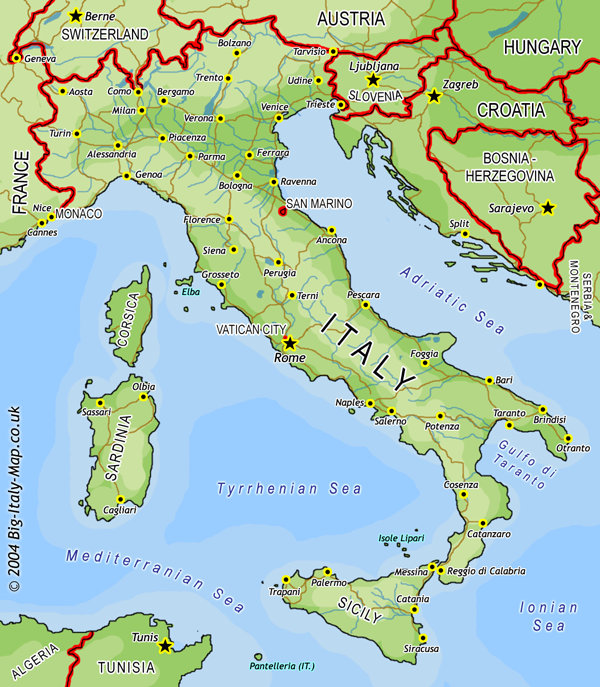

_-_The_Last_Supper_(1495-1498).jpg)




You are still missing a lot of sections. Please visit my blog, so you can have a better idea of what you need to do:
ResponderEliminarhttp://goingtogradschoolintheus.blogspot.com/
Hurry up guys, you need to finish this section of the blog as soon as possible!
ResponderEliminarBeautiful images!!!
ResponderEliminar